Scientists want to rescue reefs and protect Miami with tougher breeds of staghorn coral
It was a marvelous night for coral sex.
Warm waters bathed the reef a mile off Key Biscayne. A nearly full moon signaled to staghorn polyps that the time was right. A team of eager University of Miami scientists and student divers waited underwater, nets ready to collect a flurry of eggs and sperm that would float to the surface in what they describe as a magical snowglobe effect.
Birds do it. Bees do it. Corals — which are living, procreating animals and not just ornate rocks — do it, too.
But as the clock ticked toward midnight, the apparently shy staghorns did not release their gametes. One of nature’s great spectacles would occur another night. Coral spawning is impossible to predict with precision.
“They’re ready to pop but not right now,” said Liv Williamson, a senior research associate in marine biology and ecology at UM’s Rosenstiel School of Marine, Atmospheric and Earth Science. She had been swimming underwater for an hour, shining a light on the polyps at Canon Reef, which UM scientists planted three years ago.
As Williamson climbed aboard and took off her scuba gear, she and her expedition mates joked that they should have played Barry White songs from the dive boat’s speakers to provide some romantic inspiration.
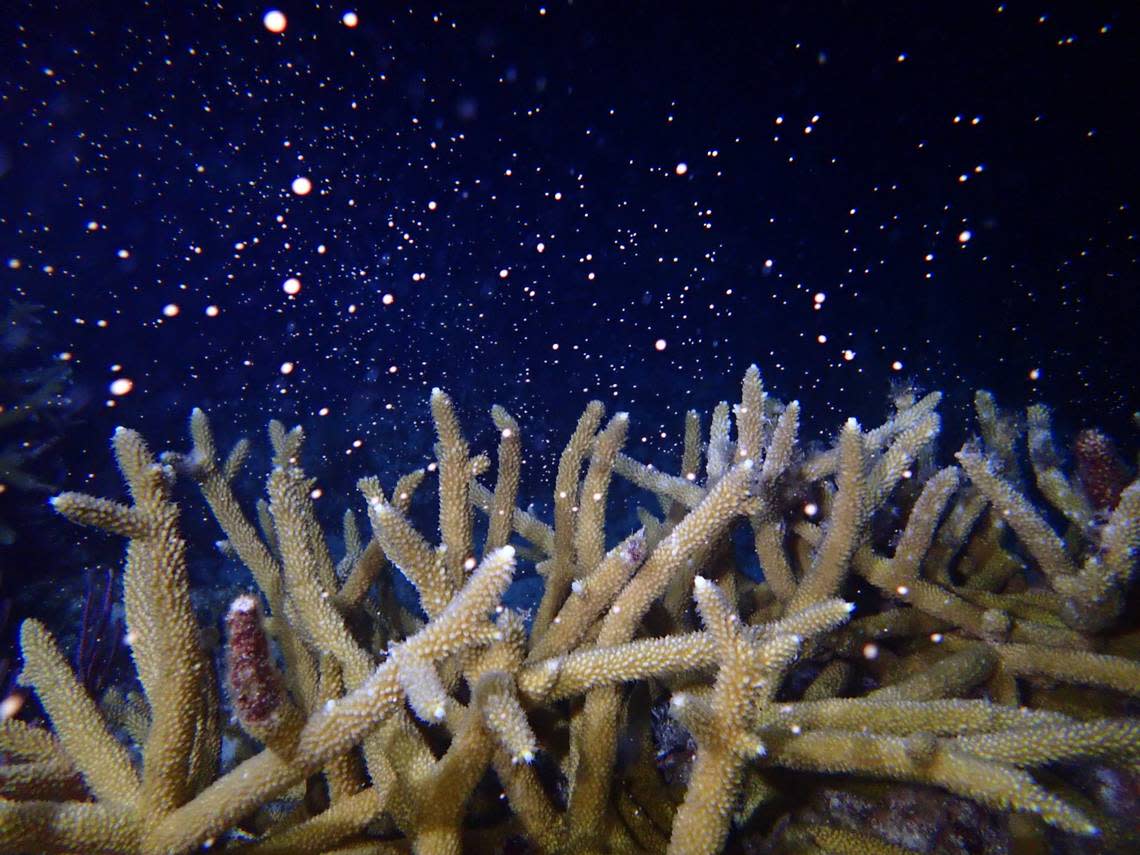
Although spawning was delayed by two nights, the dive was a success because examination of the pregnant corals grown at UM provided proof that they are reproducing faster than expected. And, one night earlier in Key Largo, Williamson and colleagues had observed spawning at a different reef and collected gametes for their lab.
“It’s assisted fertilization,” Williamson said. “The corals would still spawn and make babies, but we are trying to maximize the output and survival rate by collecting from different colonies and parents, mixing them together and making the most diverse, resilient batch of offspring as possible.
“There’s a little speed dating and matchmaking going on.”
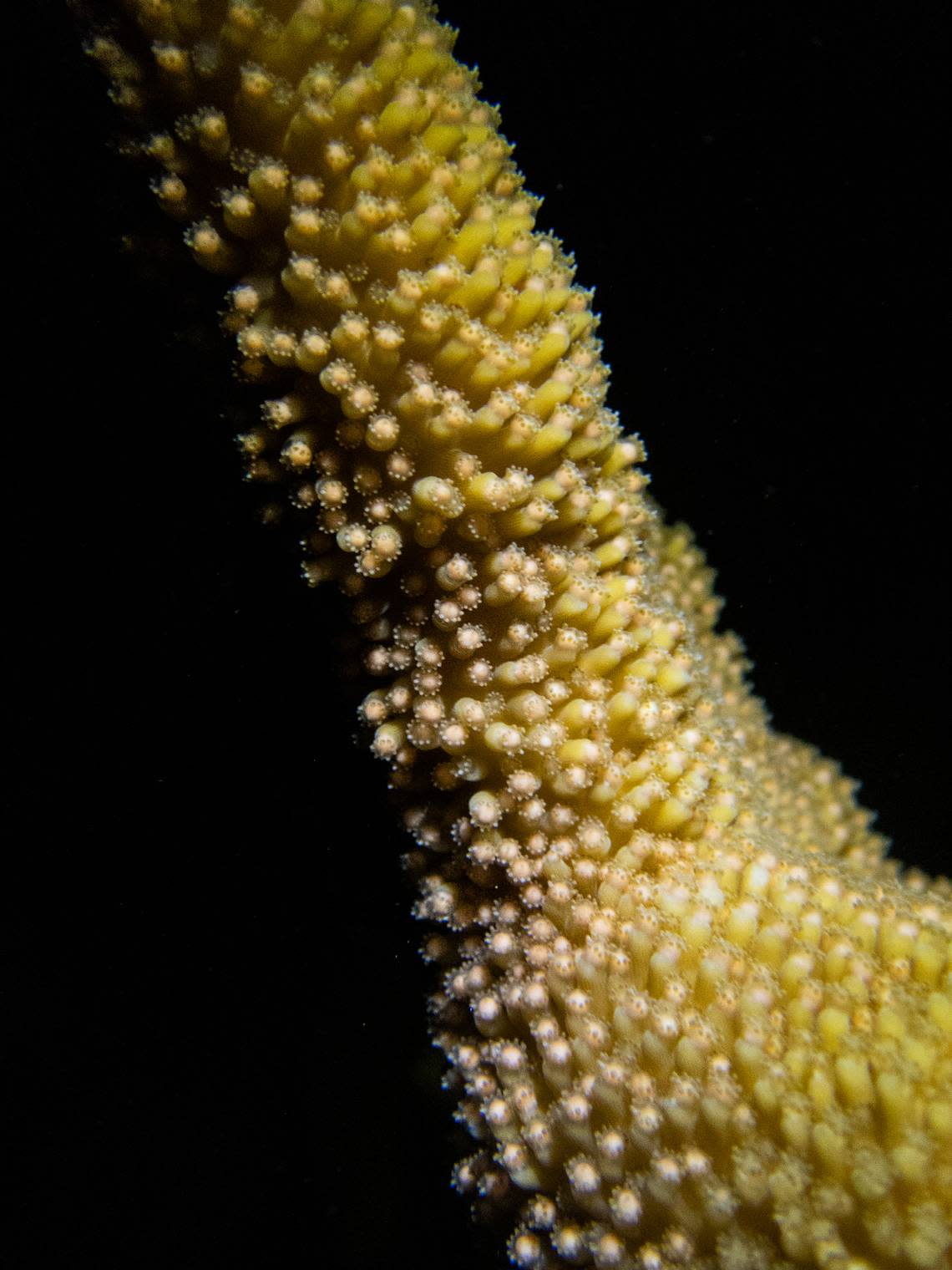
The mission of UM’s Rescue a Reef program goes beyond conservation. Not only are scientists seeking to regrow reef habitats that have been devastated over the past three decades by disease, climate change and pollution, but they aim to make the next generation of reefs robust enough to help protect Miami’s coastline from sea rise, flooding and erosion.
Restore a reef, save a city.
“Corals have an incredible three-dimensional structure that breaks wave energy and keeps communities safer,” Williamson said. “There is a connection. We have degraded reefs in South Florida and we see coastal flooding all the time. A reef is like a self-regenerating sea wall that grows and keeps up with sea rise.”

Diego Lirman considers himself a coral grandparent. Lirman, associate professor of marine biology and ecology, runs the Rescue a Reef laboratory on Virginia Key. It’s a hub of ground-breaking research and a nursery for infant corals.
“After studying the decline of reefs, I saw an opportunity to flip the narrative and bring them back to life,” Lirman said from the deck of the dive boat at sunset as he prepped for a visit to the reef he’s nurtured. “Sadly but proudly we can say that every staghorn from Miami Beach to Key Largo are corals that we grew. Now they are reproducing by themselves.”
Experimenting with gametes in the lab to produce new, hardier strains of coral is essential to their salvation. Corals are hermaphrodites that release both eggs and sperm.
“When reefs were healthy there were massive spawning events, big parties, giant orgies in the ocean,” Lirman said. “But natural spawning is not happening like it used to because reefs have been wiped out or are smaller, so the gametes are not as plentiful and therefore they are not meeting up. By collecting and cross breeding them, we give them a helping hand.”
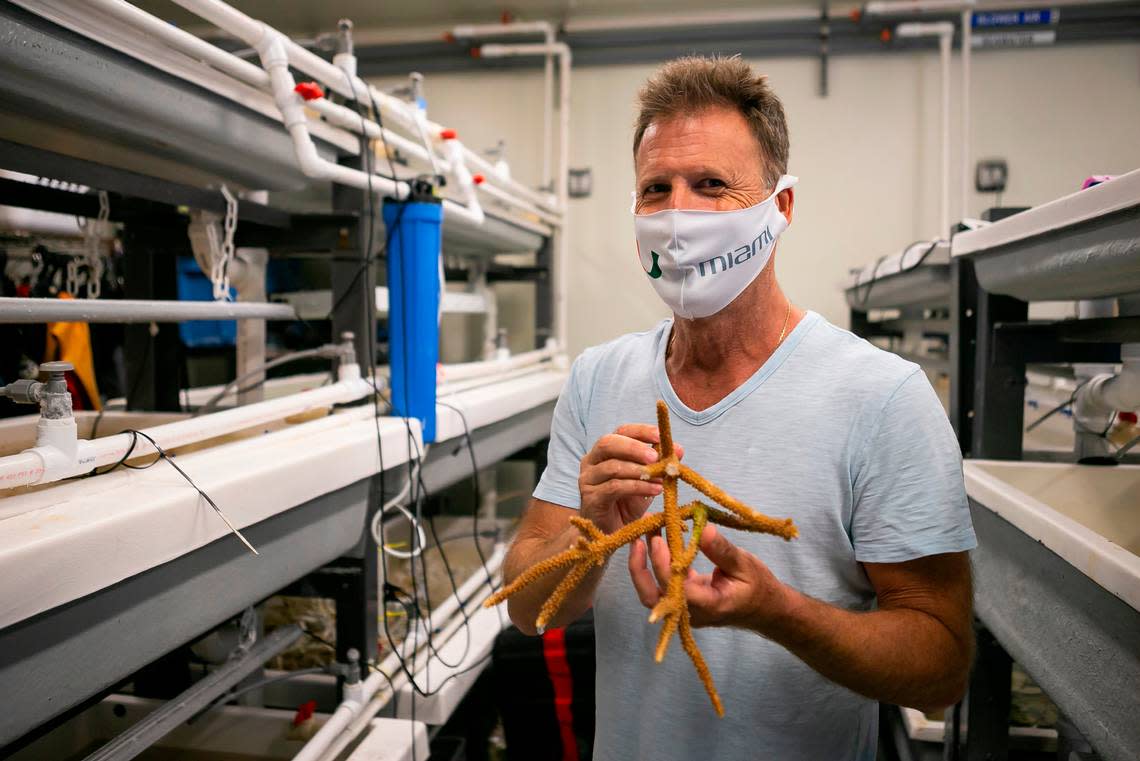
Coral gardening has become an effective method for the painstaking process of restoring reefs, especially with staghorn coral, which is an endangered species after 90 percent of it was lost to disease and which grows quickly — up to six inches in a year — compared to other corals. Fingers of the antler-like staghorn can be broken off and attached to artificial support structures underwater where they’ll grow into branches and can be transplanted. Gardening is also working with brain and star corals.
But gardening is the propagation of corals that have the same genetic code. Genetic diversity is key to creating healthier corals that are more heat-tolerant and disease-resistant. Plus it takes years to grow a branch into a colony.
“There is greater urgency right now to protecting our shoreline and billions of dollars of coastal property,” Lirman said. “You want a genetically diversified population that can deal with whatever adversity our changing, stressed oceans throw at it. In the lab we can fertilize the eggs and sperm from eight different colonies and create a million babies with different parents. We can cross gametes with sperm from Mexico to find the right combination of genes that will survive the next bleaching event.”
In the lab scientists can nourish and tend baby corals for months, through their most vulnerable stage of life, and improve their survival rate when they are returned to the ocean as teen corals.
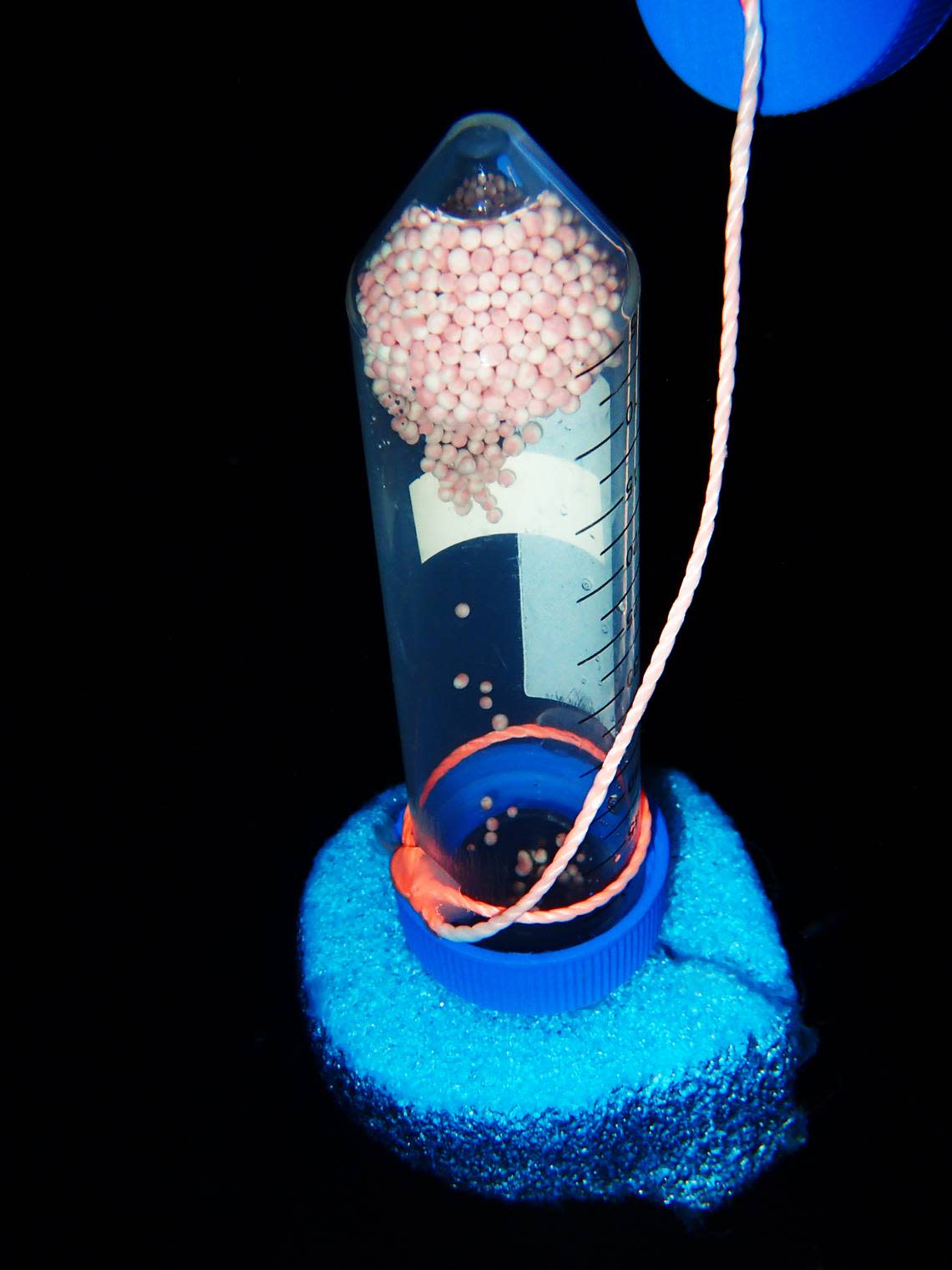
Studying corals in the lab also enables scientists to simulate conditions like the lunar cycle and water temperatures that induce corals to spawn with remarkable synchronicity.
“We’ve found that animals glued to the sea floor which don’t have a way to talk to each other need something to interpret together,” Williamson said. “They have blue light receptors that detect light from the moon. It is fascinating that these organisms that don’t even have a brain and that were on the brink of extinction can coordinate with each other and use the same environmental cues to reproduce and remain resilient.”
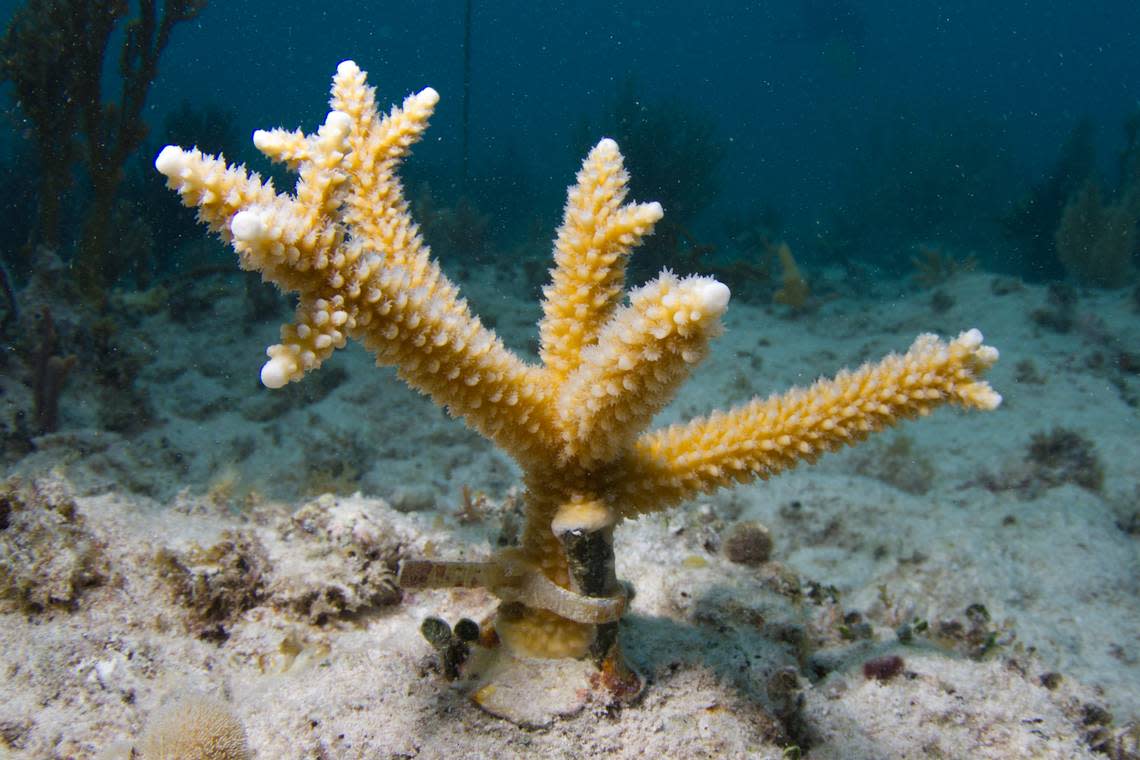
To reinforce UM’s restoration strategies, the U.S. Defense Department’s Advanced Research Projects Agency presented the lab with a $7.5 million federal grant to address threats to coastal military and civilian infrastructure in Florida and the Caribbean.
“Miami is ground zero for endangerment of coastal infrastructure from sea rise, hurricane storm surge and flooding,” said Andrew Baker, a marine biology professor and director of the Coral Reef Futures Lab at the Rosenstiel School. “We want to build hybrid reefs that provide the wave-buffering advantages of artificial structures and the ecological benefits of coral.
“Our reefs have been battered by heat, acidification, wastewater and nutrient runoff. How do we develop engineering solutions that foster growth and resilience?”
Baker and Lirman ultimately hope to restore 125 acres of reef habitat by planting over 150,000 coral colonies and larvae from five species. They’re working against factors that have caused 25 percent of the world’s coral cover to disappear over the past 30 years. In Florida, reefs are crucial to the state’s economy and ecology, providing a habitat for fish and lobster and a barrier against storm surge. The National Oceanic and Atmospheric Administration even put a price tag on reefs, calculating that they have an asset value of $8.5 billion in southeast Florida and generate 70,400 jobs.
UM marine biology students Avery Boals and Juliana Grillo take a more paternalistic approach. They are volunteers for Rescue a Reef. On the recent night dive, they searched for and found specific staghorns Grillo planted two and a half years ago.
“I’ve been tracking their growth from childhood to adulthood,” Grillo said. “I dive down there and recognize them and it makes you feel good to see how they are thriving.”
